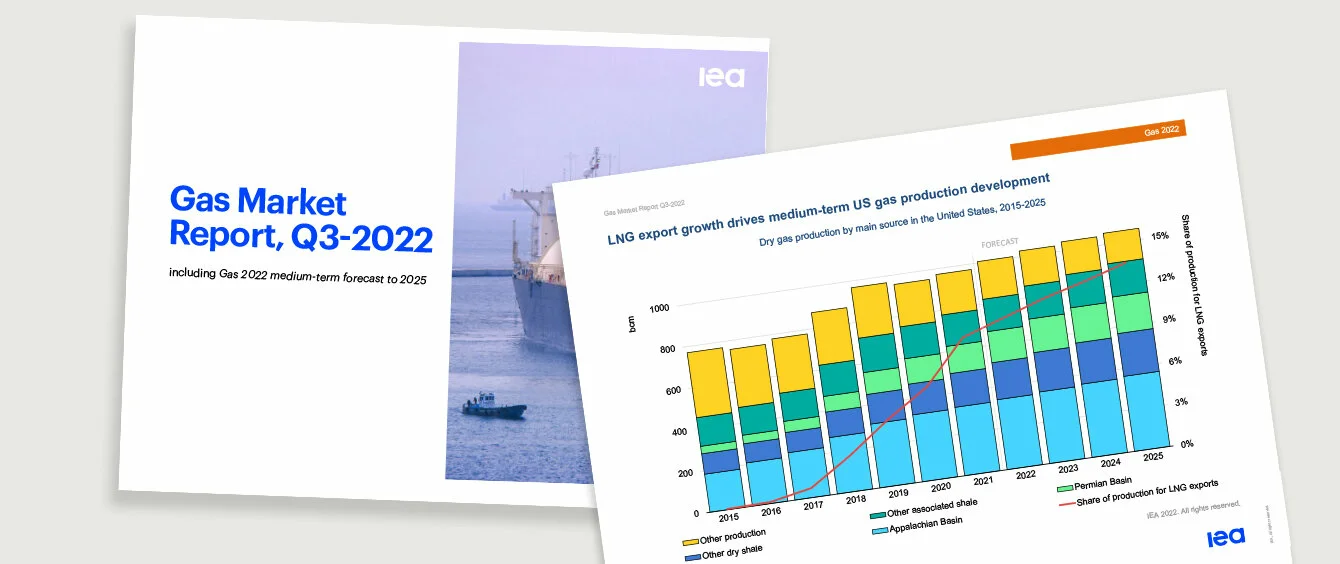Russia’s invasion of Ukraine has precipitated an energy crisis at a time when gas markets were already tight.
Europe’s desire to wean itself off Russian gas imports and Moscow’s use of gas supply to pressure European nations has put gas availability and prices at the heart of the crisis, according to the IEA’s Gas Market Report 2022.
Russia’s aggression has redefined global gas markets, leading to fuel switching and demand destruction, the agency says.
Europe: high demand for LNG
Europe has moved from the destination of last resort for liquified natural gas (LNG) to become a primary market for the fuel, attracting cargoes away from other destinations.
The region’s thirst for LNG is expected to outstrip new supply this year and account for more than 60% of the net growth in global LNG trade through 2025, the IEA says.
Countries, notably in Asia, that had predicated a switch from coal on increased LNG use are now reassessing their plans, owing to high prices and a lack of availability at least in the short to medium term until more liquefaction capacity is built.
As a result, global gas demand overall is expected to fall this year by 0.5% and grow at an average annual rate of only 0.8% from 2022 to 2025. This represents 60% less growth in global gas consumption over the period, compared with last year’s forecast.
Less consumption doesn’t mean a faster energy transition
However, the IEA finds that less gas consumption does not mean a faster energy transition.
The agency says 80% of its downward revision in gas demand is accounted for by weaker economic growth (40%) and reduced switching from higher carbon fuels (coal and oil) to gas (40%).
The impact of increased efficiency and gas displacement, for example with renewable energy, accounts for only 20% of the revision.
Demand savings and low carbon gas
A quick and orderly reduction in Europe’s imports of Russian gas does align with climate goals and, in addition to increasing non-Russian gas imports, needs to focus on two principal elements, the IEA says — reducing gas demand and scaling up domestically-produced low carbon gases.
The first element involves an intensification of many of the processes Europe is already pursuing as part of the energy transition. These include increasing renewable energy capacity to reduce gas use in power generation, energy efficiency measures and heat pump use in the residential and commercial sectors to minimize gas use in heating, and encouraging behavioural change, for example reducing thermostat settings by 1°C. Each would each result in large reductions in gas consumption.
Although more medium term, scaling up domestically-produced low carbon gases would also deliver major benefits.
Increased biomethane production and low carbon hydrogen generation in Europe could save between 10-15 (billion cubic metres) Bcm of natural gas by 2025, the IEA estimates.
Industry to drive demand growth
Globally, it is the industrial sector which will be the primary driver of gas demand, accounting for over half of the growth in consumption from 2022-2025.
China remains the largest national contributor, led by its industrial sector. However, the country’s annual consumption growth is expected to fall to only 5% between 2022 and 2025, less than the average 11% a year seen in 2017-2021.
On the supply side, LNG trade is expected to grow by only 4%/yr from 2021-2025, well below the annual average of 7% between 2016-2020. Long-distance pipeline trade is expected to fall by an average 1.9%/yr over the forecast period as Europe reduces its imports of Russian gas.
Although the IEA says its forecasts are subject to a high degree of uncertainty given the current geopolitical environment, both indicators suggest gas markets will remain tight and prices high for some time to come.
